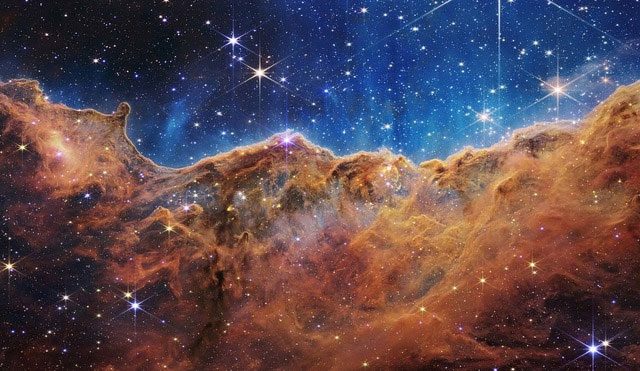The James Webb Space Telescope (JWST) continues to expand our understanding of the universe by discovering areas of extremely low temperatures that have never been recorded before.
The most powerful space telescope ever built has uncovered a pristine cosmic ice cluster within a dense cloud of dust, containing molecules that could support the formation of life. It’s important to note that the “life” being referred to is only the kind we currently know.
This ice has temperatures dropping to -440°F, which is -263°C, marking a record for the coldest cosmic ice ever measured. For comparison, the lowest temperature that can theoretically be achieved is 0 K, equivalent to -273.15°C or -459.67°F; and the coldest point in the universe is the Boomerang Nebula, located 5,000 light-years from Earth, with a temperature of 1 K, approximately -457.87°F or -272.1°C.
Klaus Pontoppidan, an astronomer at the Space Telescope Science Institute and co-author of the research report, stated that it would be impossible to observe this ice without the Webb telescope.

Image from Webb showing Chameleon I cloud – (Photo: NASA).
JWST has studied an area known as Chameleon I, located in the southern constellation of Chameleon, approximately 630 light-years away from Earth; this is one of the closest star-forming regions to us, containing dozens of star-forming dust clouds. This area was once considered to be “holes” in the sky: dense molecular clouds filled with gas and dust that block all light emitted from stars behind them.
Clouds like Chameleon I are the nurseries for young stars; they gradually dissipate, and over time, this region forms stars and possibly even rocky planets. However, the cold ice located deep within ultimately determines what chemical components are present in this gas and dust, and which of these can support the formation of life.
Thanks to the powerful instruments of the Webb telescope, including the Near-Infrared Camera (NIRCam) capable of deep probing, astronomers have peered deeply into the central region of Chameleon I and discovered ice in the early stages of transformation—just before the core of the cloud collapses and begins star formation.
The research team used light from two stars, NIR38 and J110621, to illuminate Chameleon I at infrared wavelengths. Locked in by ice, the molecules within the Chameleon I cloud absorb starlight at different infrared wavelengths. Subsequently, astronomers studied the chemical signatures that appeared as reductions in the obtained spectral data. This data helped the team quantify each type of molecule present in the heart of Chameleon I.

NGC 3324, star-forming region in Carina Nebula.
What is in the Ice?
As expected, the research team discovered a mix of life-supporting compounds such as water, carbon dioxide, carbon monoxide, methane, and ammonia. Observations also revealed signs of carbonyl sulfide ice, allowing scientists to measure the amount of sulfur—another element necessary for life on Earth—present in the molecular clouds.
Researchers also found methanol, the simplest organic compound, considered a clear indicator of the chemical processes occurring in the early stages of star and planet formation.
“This is the first time researchers have been able to study the composition of ice near the center of a molecular cloud, before stars began to form“, said Melissa McClure, an astronomer at the Leiden Observatory in the Netherlands and lead author of the study.
Significance of the New Discovery
The origins of molecular clouds like Chameleon I are dispersed areas of dust and gas. The ice contains vital molecules necessary for life to form on the surface of the dust layer.
With data from Webb, astronomers learned that some elements in Chameleon I were less than expected when considering the cloud’s density.
For example, researchers only found 1% of the expected sulfur, 19% of the expected oxygen and carbon, and only 13% of the total expected nitrogen. As noted by the researchers, these elements may be trapped within the ice existing in other areas where light from NIR38 and J110621 does not penetrate.
In the near future, the research team plans to use data from Webb to calculate the size of the dust particles as well as the shape of the ice.


















































